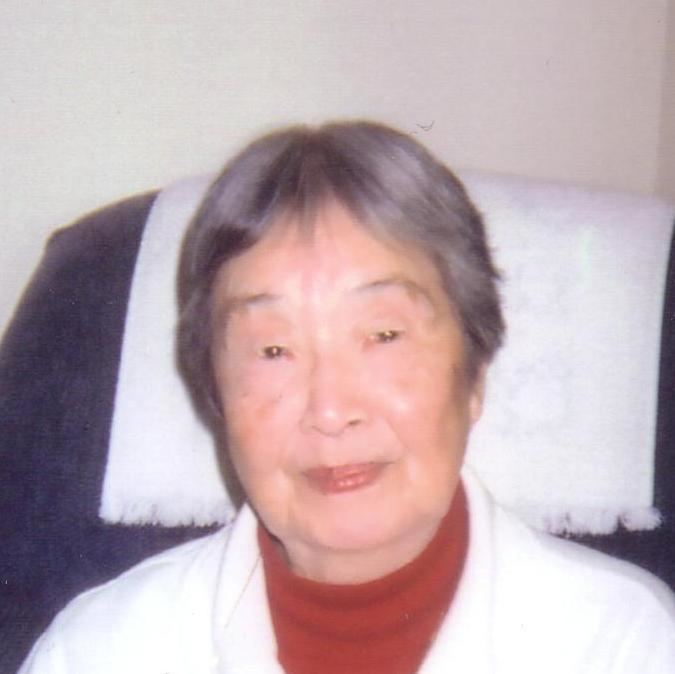Name Monica Sone Nationality USA Role Writer | Genre autobiography Books Nisei daughter | |
 | ||
Born Kazuko ItoiSeptember 1, 1919 ( 1919-09-01 ) Subject Japanese American internment Education | ||
"Nisei Daughter" with author Monica Sone
Monica Sone (September 1, 1919 – September 5, 2011), born Kazuko Itoi, was a Japanese American writer, best known for her 1953 autobiographical memoir Nisei Daughter, which tells of the Japanese American experience in Seattle during the 1920s and 1930s, and in the World War II internment camps and which is an important text in Asian American and Women's Studies courses.
Contents
- Nisei Daughter with author Monica Sone
- Biography
- Nisei Daughter
- Published works
- Critical studies
- References
Biography
Sone grew up in Seattle, where her parents, immigrants from Japan, managed a hotel. Like many Nisei children, her education included American classes and extra Japanese language and cultural courses; later, she and her family visited Japan. After finishing high school she attended secretarial school, completing the two-year course in just one year. Soon after, she contracted tuberculosis and spent nine months at Firland Sanatorium with future best-selling author of The Egg and I, Betty MacDonald. Upon her release, Sone hoped to enroll at the University of Washington, but the December 1941 attack on Pearl Harbor forced her to abandon these plans.
On February 19, 1942, President Franklin Roosevelt issued Executive Order 9066, authorizing military commanders to designate areas from which "any or all persons may be excluded" and paving the way for the removal of all Japanese Americans from the West Coast. Sone was 21 when she and her family were "evacuated" to the Puyallup Assembly Center, in May 1942. Three months later, the Itois were transferred to the War Relocation Authority camp at Minidoka, Idaho. In 1943, Sone was allowed to leave camp after passing the so-called "loyalty questionnaire" and relocated to the Chicago area, where she worked as a dental assistant and lived with a white Presbyterian minister and his family. Eventually she received a scholarship to attend Hanover College (called "Wendell College" in her memoir), a Presbyterian school in Indiana. She finished her undergraduate degree at Hanover and in 1949 received a master's degree in clinical psychology from Case Western Reserve University.
After finishing her postgraduate work at Case Western, Sone became a clinical psychologist and social worker for the Catholic Community League, practicing for thirty-eight years. She married Geary Sone, and the couple settled in Canton, Ohio, where they raised four children. She died in Canton shortly after her 92nd birthday.
Nisei Daughter
Sone’s best-known work, the memoir Nisei Daughter, was originally published by Little, Brown in 1953. It tells the story of a Japanese immigrant family's life in the United States before and during the war. Sone's parents are from Japan (Issei), and their children are born in the States, making them Nisei (as in the title). The book explores the cultural differences the family faced before the war, both in the States and on a visit to Japan, and their incarceration during World War II. The story is told from Sone’s perspective. The cover photograph shows Sone and her sister Sammy smiling and sitting on the steps of the Carrollton Hotel, their father’s establishment, in 1932.
Exposition concerning the courtship and marriage of Sone’s parents and the births of their four children begins the book. A comfortable childhood existence is nostalgically portrayed in the environs of the Skid Road Hotel, which Mr. Itoi operates near the Seattle waterfront. He is portrayed as a hard worker and a resourceful provider, refusing rooms to characters who seem drunk or otherwise unsavory, and continually repairing and improving his establishment. Mrs. Itoi is more colorfully portrayed as a woman who is capable of having fun and who wants to indulge her children in their creativity and their whims. The “shocking” fact of life that Sone discovers when she is six is that she is Japanese and, because of that fact, she and her siblings must attend daily sessions at a special Japanese school rather than play after their regular grammar school classes. The conflict between Sone’s Japanese heritage and her American situation is developed throughout the book as its main theme, as the author continually searches for who she is and where she belongs.
Sone offers a first-hand account of life at Minidoka, one of ten public concentration camps where Japanese Americans were detained during the war. Her account offers a distinctly positive picture of life in the camps and demonstrates how its residents struggled to accommodate their situation. By the time Nisei Daughter was reissued in 1979, Americans had become far more aware of and sensitive to mistreatment of people of Japanese descent in the United States during World War II. These new attitudes were reflected in Sone's preface for the new edition, which reflected quite a different tone than her original in 1953.
